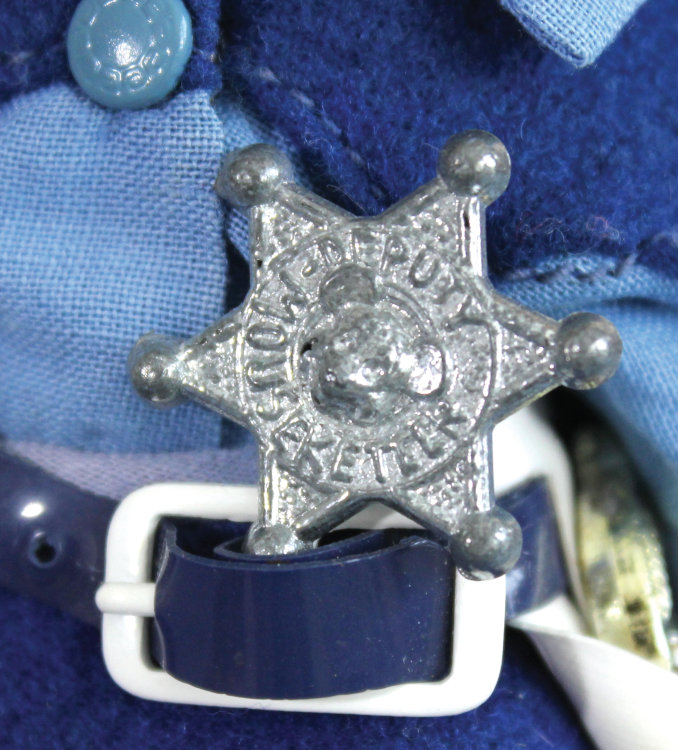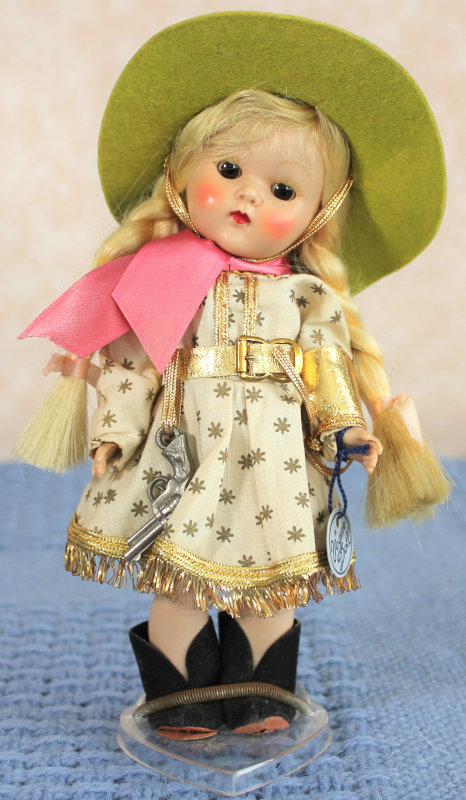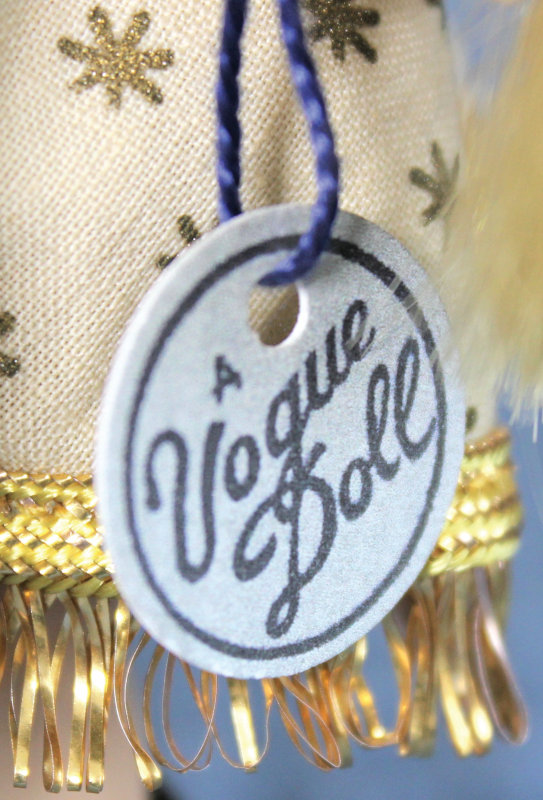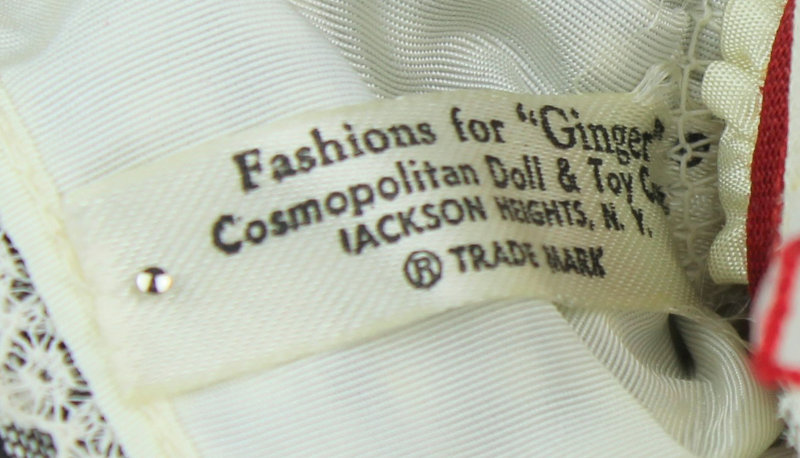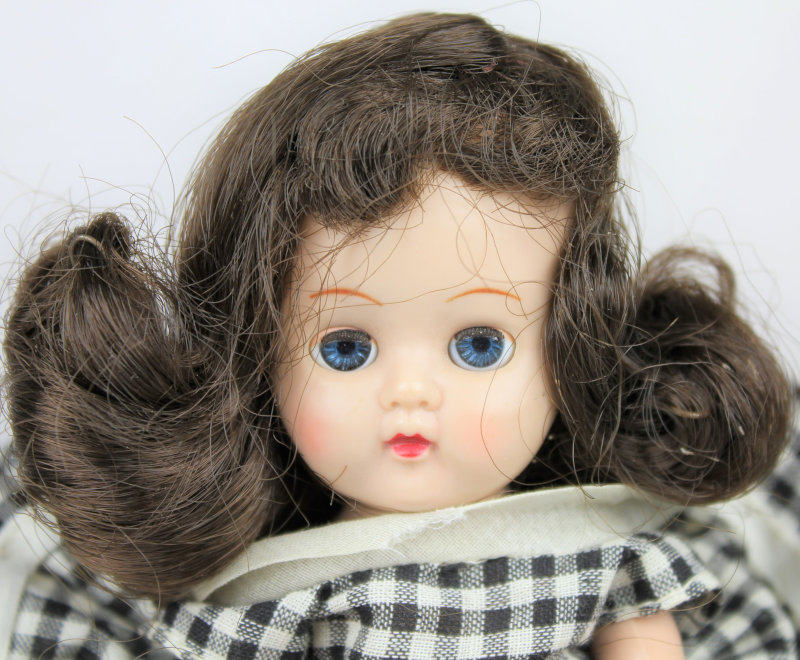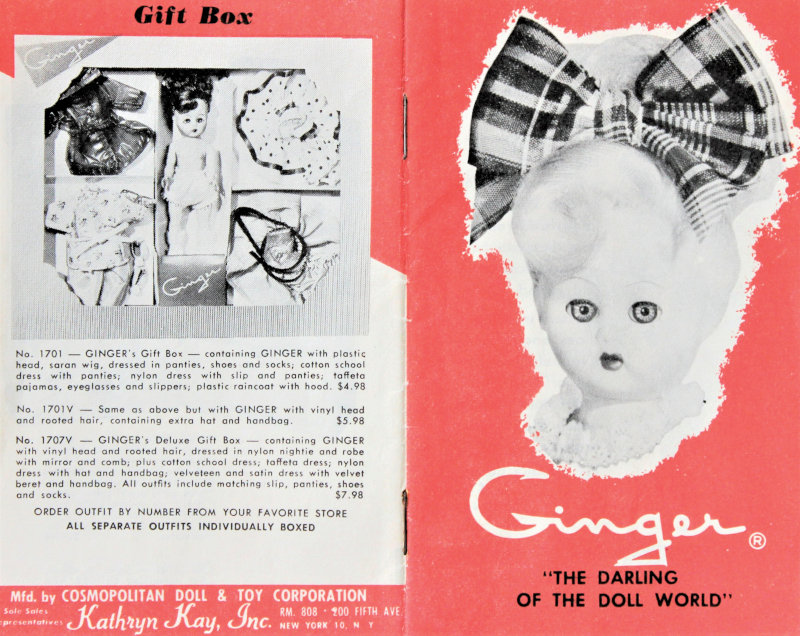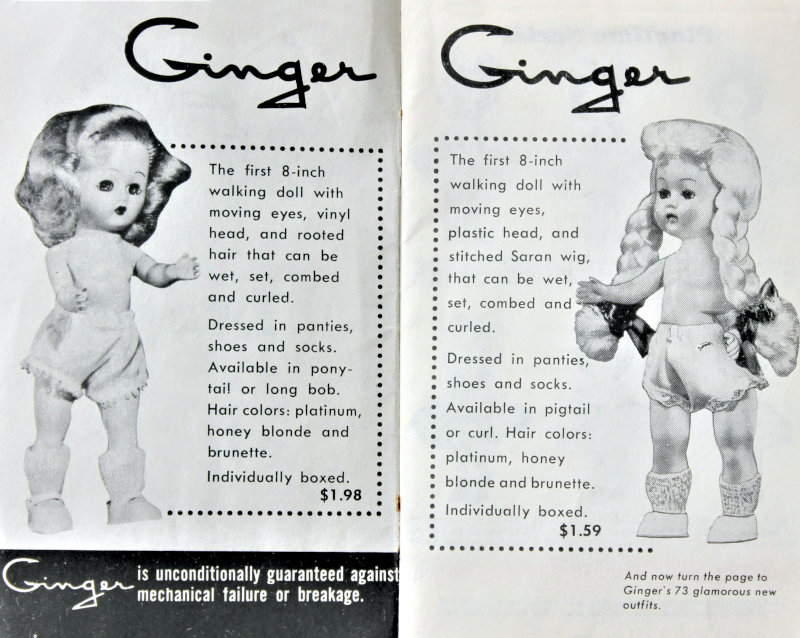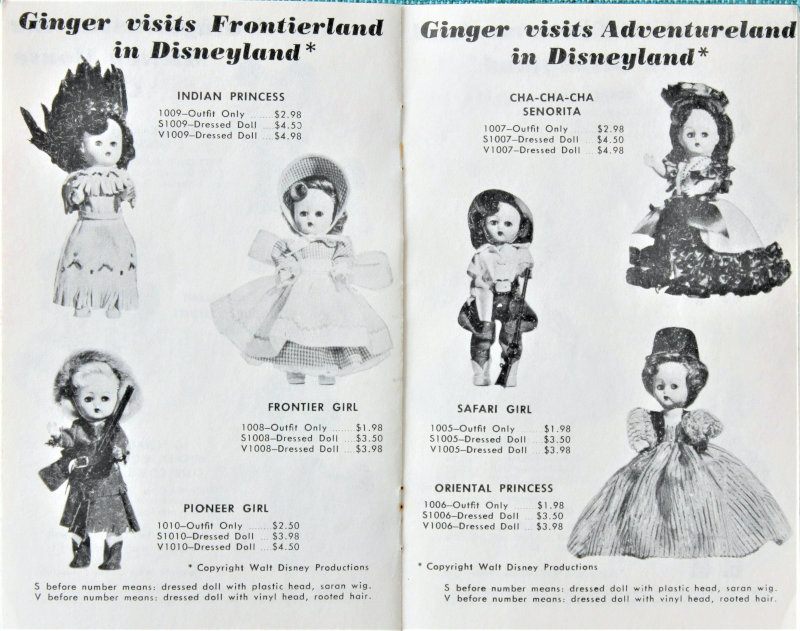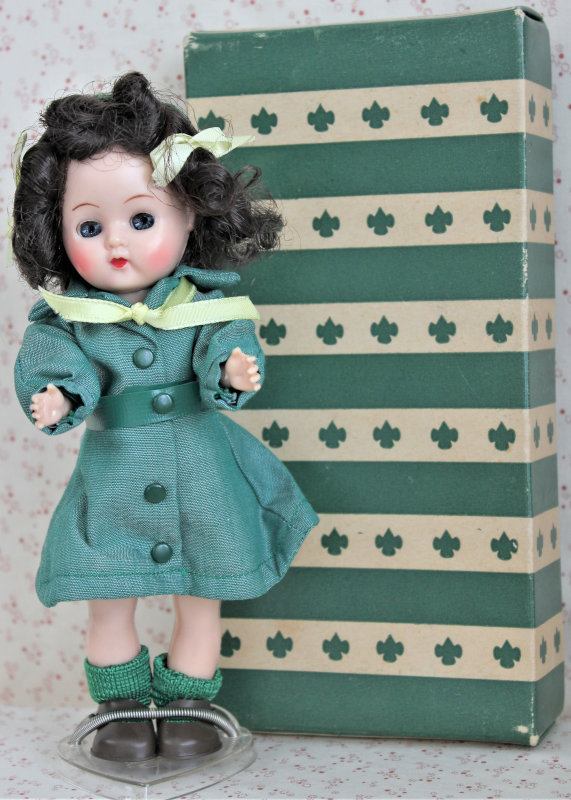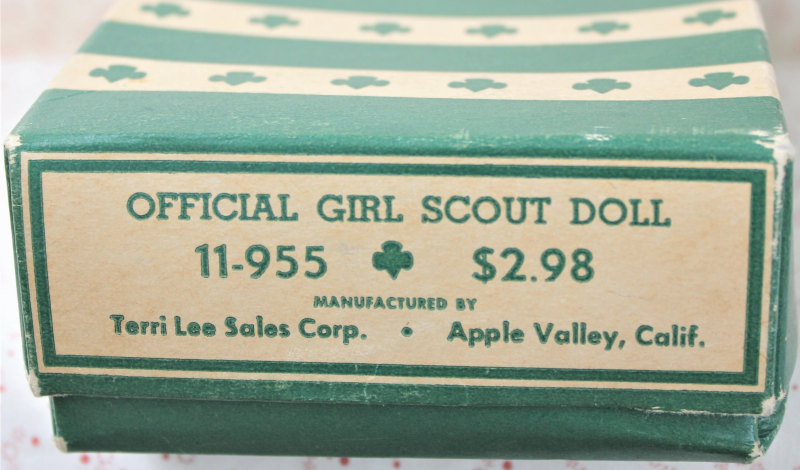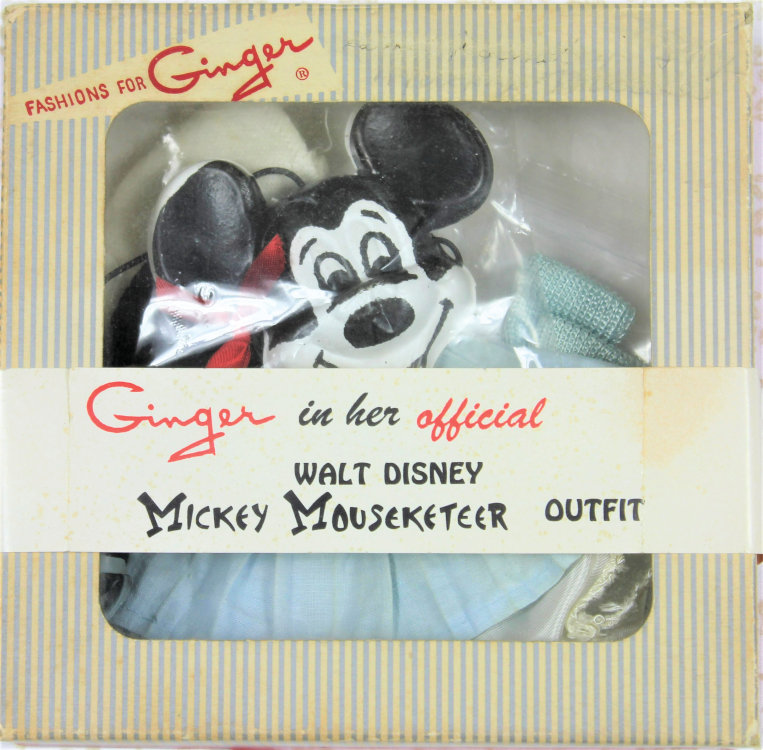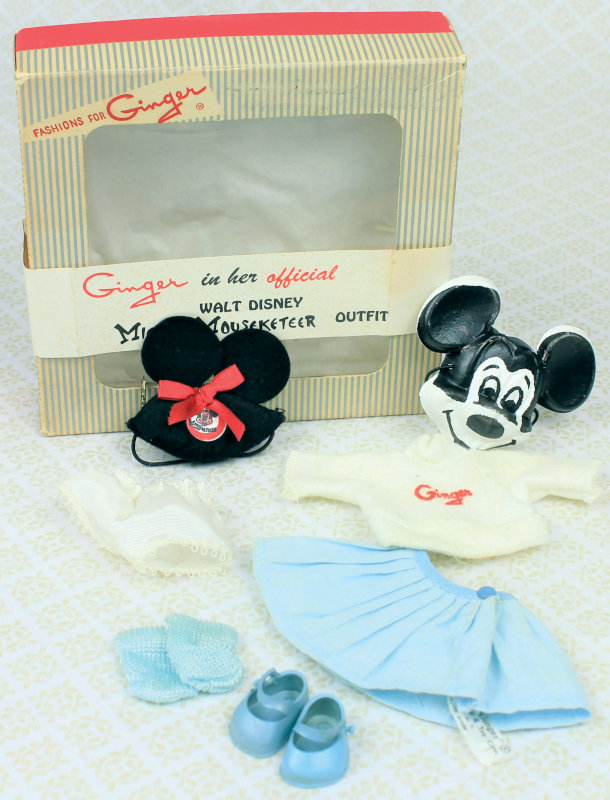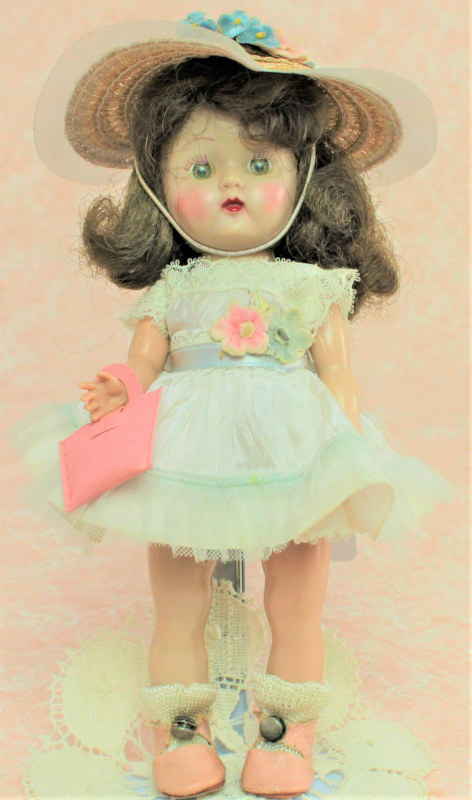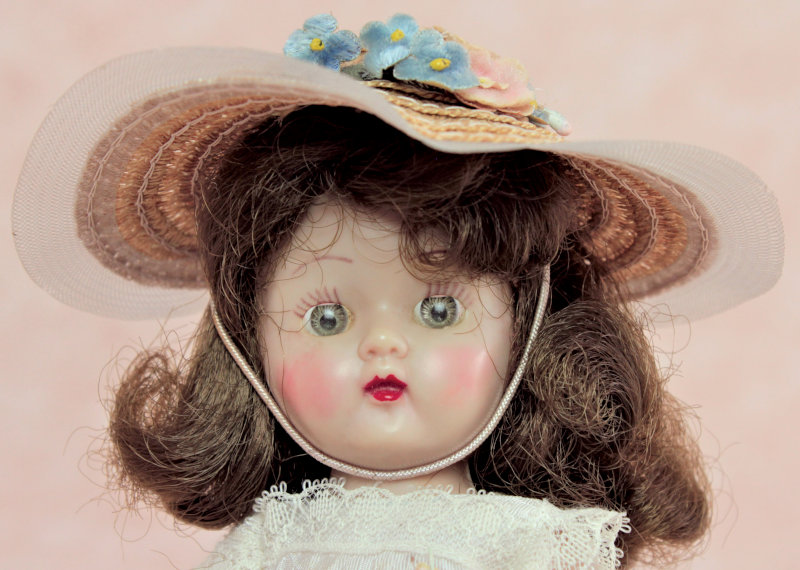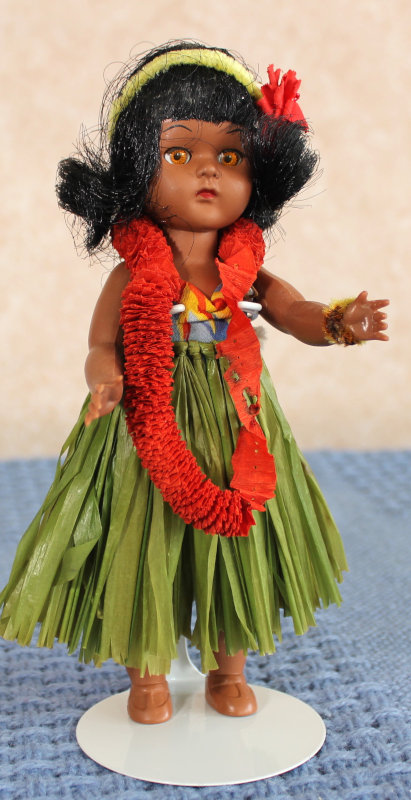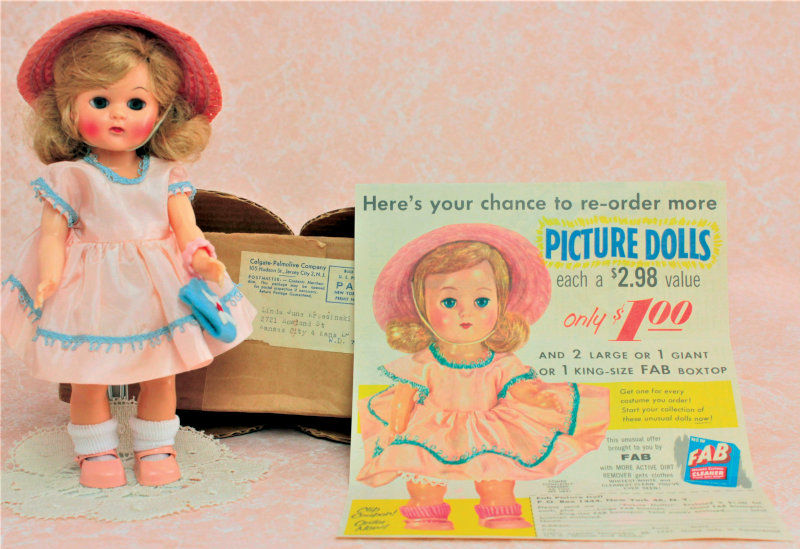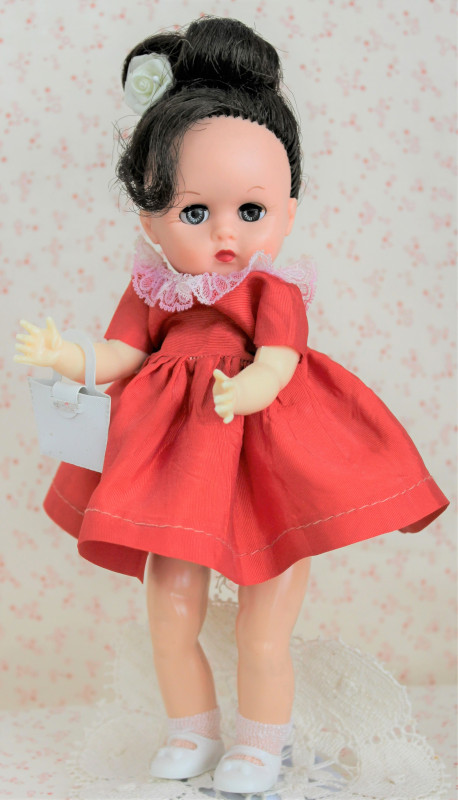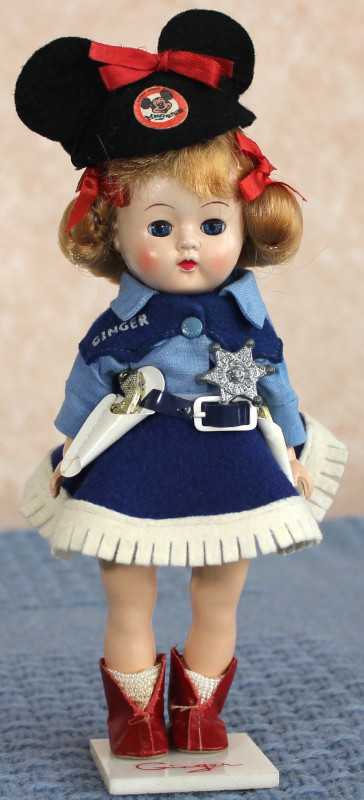
By Karen B. Kurtz
Photos by Mark A. Kurtz
Nearly every American doll company around in the 1950s tried to capitalize on the stellar success of Ginny, Vogue’s charming 8-inch toddler doll. Ginny reigned as queen, but Cosmopolitan promoted 8-inch Ginger as “the darling of the doll world” because she was also made from high-quality plastic and wonderfully dressed. Today, Ginger has finally come into her own among collectors after taking a back seat to Ginny for many years.
Cosmopolitan Doll and Toy Company, a division of Kathryn Kay, Inc., in New York, produced many hard plastic and vinyl dolls in the 1950s, but they are best known for Ginger. Kay, a former sales representative of Vogue Doll Company, used the same plastics manufacturer, Commonwealth Plastics Corporation, to manufacture Ginger. In an early advertisement that launched Ginger, Kay said, “Our success in building sales in the miniature doll field is history in the industry. By living up to our slogan ‘for the Tops in Toys designed and priced exclusively for the retail trade’ we have protected not only price and profit but also selected the channels of distribution.”
Collectors find Ginger desirable because she reflects her era. Other companies also joined in to share in Ginger’s popularity. Simon and Schuster printed the Little Golden Activity Book Ginger Paper Doll (story by Kathleen N. Daly, pictures by Adriana Mazza Saviozzi, 1957), while the Doll-of-the-Month Club kept subscribers up to date with new, smart fashions.
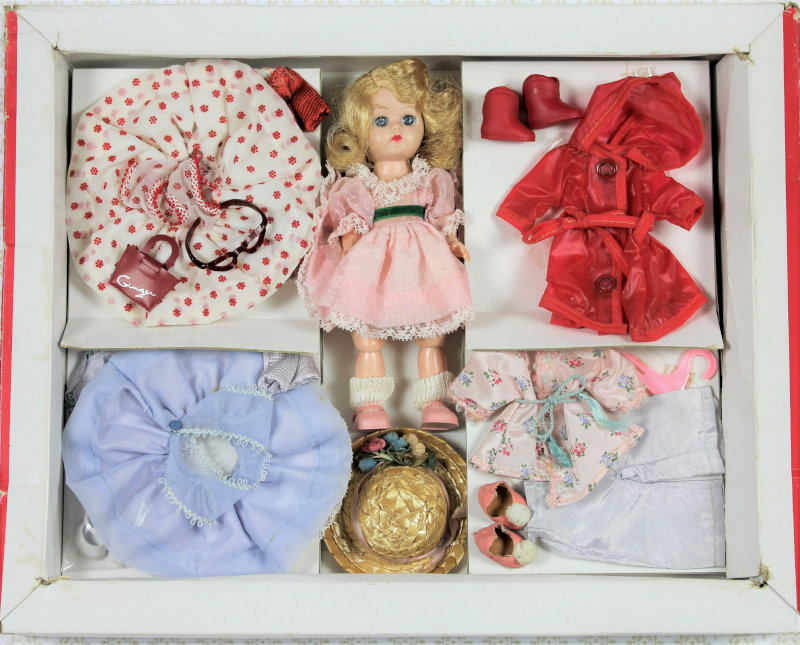
Wardrobe and Accessories
Cosmopolitan’s strategies helped to assure Ginger’s enduring survival. Ginger came either undressed or fully dressed in complete outfits. The company also made dozens of outfits and accessories, ranging from trunks, luggage, and a cardboard dollhouse with lawn furniture, to Zip, Ginger’s pet monkey, with six different outfits of his own. Tagged clothing was marked “Fashions for Ginger / Cosmopolitan Doll and Toy Company / Jackson Heights, NY.” Thousands of Ginger dolls, outfits, and accessories moved into eager children’s hands.
It is still relatively easy for treasure seekers to upcycle a Ginger found in good condition into a doll in excellent condition. Collectors often substitute a better wardrobe for Ginger from damaged or missing pieces. Only a small change may be necessary, like exchanging an unmarked dress for a tagged one. Collectors can amass a good collection of Ginger items because they take up little space.

Characteristics
Cosmopolitan adopted Vogue’s strategy of selling dolls at a reasonable price and then made sizable profits on Ginger’s extensive wardrobe. Back in the day, a Ginger doll cost about $3. Boxed outfits ranged from $1 to $4 each.
Early painted-lash Ginger dolls had jointed arms, legs, and head. They were unmarked. Some were head-turning walkers with straight legs or bent knees. They wore glued-on wigs that were generally styled in pigtails or a flip. Because they’re unmarked, Gingers are hard to identify at first glance. Subtle differences exist between Ginger, Ginny, and other 1950s look-alike dolls. Author Judith Izen reports the only way to reliably identify Ginger is through careful study. Brochures inserted into original boxes and advertisements aid in identification.
Authors Polly and Pam Judd provided detailed descriptions of Ginger and the look-alike dolls in two books, Glamour Dolls of the 1950s and 1960s and Hard Plastic Dolls II. “A distinctive feature of Ginger is an unusual, molded arm hook with a straight edge where it is strung to the body,” the Judds wrote. “Other characteristics include a mold seam through the middle ear making the center part of the ear higher than the top and the lobe. The doll will have a dimple on her chin, dimples on her hands, and dimples above her toes.”
Most Ginger dolls have small blue eyes, but some have green or brown eyes. Early Gingers with black or brown skin tones are rare. Cosmopolitan later manufactured Ginger dolls with hard plastic bodies and vinyl heads with large eyes and abundantly rooted hair. The vinyl-headed dolls were marked “Ginger” on the head. They have molded eyelashes and may have bent knees and elbows. A vinyl-headed doll is usually less expensive than an earlier doll.
Four more dolls in Ginger’s family were popular: the rare 8-inch Ginger with the Cha-Cha Heel; 8-inch Little Miss Ginger with high heels; slim teenager Miss Ginger; and Baby Ginger. Ginger with the Cha-Cha Heel was marked “Ginger” on the bottoms of her feet and shoes. A walking doll, she was introduced in 1957 and later restyled with medium heels. Little Miss Ginger was marked “Ginger” on her head. Outfits for Miss Ginger, a 10.5-inch slim teenager, came with silk-like stockings, high-heeled shoes, and jewelry. Baby Ginger was an 8-inch vinyl doll with bent legs.
Matching outfits for Ginger and Miss Ginger were often purchased. Today, collectors consider an identically dressed pair of dolls from the Ginger family a special find.
Over the years, Cosmopolitan made several changes in body style to keep up with innovations in technology. The company also sold basic undressed Gingers to other companies. Terri Lee, for example, dressed the unmarked Ginger dolls in Girl Scout and Brownie uniforms from 1956 to 1958. Outfits were marked “Terri Lee” and the original boxes were labeled “Terri Lee Sales Corporation.”
As with any doll, Ginger’s condition is everything. If you find a hard plastic Ginger in good condition (uncut wig, no pen marks or scratches, original clothing, factory-made shoes), hold on to her. As collectors continue to seek out the cute, small dolls of the 1950s and 1960s, values for Ginger and her look-alike cousins may grow.
Ginger Visits Disney
All of Ginger’s Disney costumes are rare and hard to find. Additionally, Cosmopolitan promoted Ginger as the only doll in the Mickey Mouse Club. Walt Disney’s Mickey Mouse Club was a revolutionary TV series — a fusion of variety, information, and entertainment that engaged both children and families. Ginger’s Mickey Mouse Club costumes need a vinyl Mickey Mouse mask in order to be complete, but the small masks often cracked over time or were lost. It is difficult to find Ginger dressed in a complete Mickey Mouse costume.
Ginger Visits Adventureland
- Cha-Cha-Cha Senorita
- Safari Girl
- Oriental Princess
Ginger Visits Frontierland
- Indian Princess
- Frontier Girl
- Pioneer Girl

Ginger Visits Fantasyland
- Blue Fairy
- Cinderella
- Dream Princess
Ginger Visits Tomorrowland
- Rocket Pilot
- Sun Princess
- Space Girl
Ginger Visits the Mickey Mouse Club
- Official Mickey Mouse Club
- Official Talent Roundup
- Mousekarade
Competing Plastic Toddlers
As plastic gained popularity in the 1950s, “Vogue gained the upper hand due to an early entry and mid-market, affordable price,” wrote researcher and author Carol Stover in the February 2003 issue of Doll World. “As with most businesses, one company’s success spawns a lot of imitators, and this was certainly the case with Vogue’s Ginny doll.”
In 1953, Nancy Ann Storybook introduced Muffie, while Madame Alexander advertised Alexander-kins and Wendy Ann. These 8-inch toddlers are easy to identify because they are well-marked.
“From that point on,” Stover said, “the gates of the doll world were flooded with unmarked toddlers.” In addition to Cosmopolitan’s Ginger, families eagerly bought Virga’s Playmate Lucy, Toni, Schiaparelli, Twinkle Ballerina with molded pointed feet, and Lollipop with colored wig; Ontario Plastics’ Paula Sue; Fortune’s Pam, Ninette, Pamette, and Jeanette; Active Doll Company’s Mindy; and Midwestern Manufacturing’s Mary Jean.
Dressed Ginger dolls were also sold as advertising products or regional souvenirs by some companies. Cosmopolitan sold some large-eyed walking Ginger dolls to Fortune Doll Company, who dressed and resold them. Three unmarked Ginger-like toddlers included Randi, Vicki, and Gigi. Admiration Doll Company produced inexpensive, lightweight hard plastic dolls in Hong Kong, but dolls manufactured from inferior plastic have not held up over time.
Karen B. Kurtz writes about dolls, history, and antiques. Find out more at www.karenbkurtz.com and sophiasgiftbook.com.


